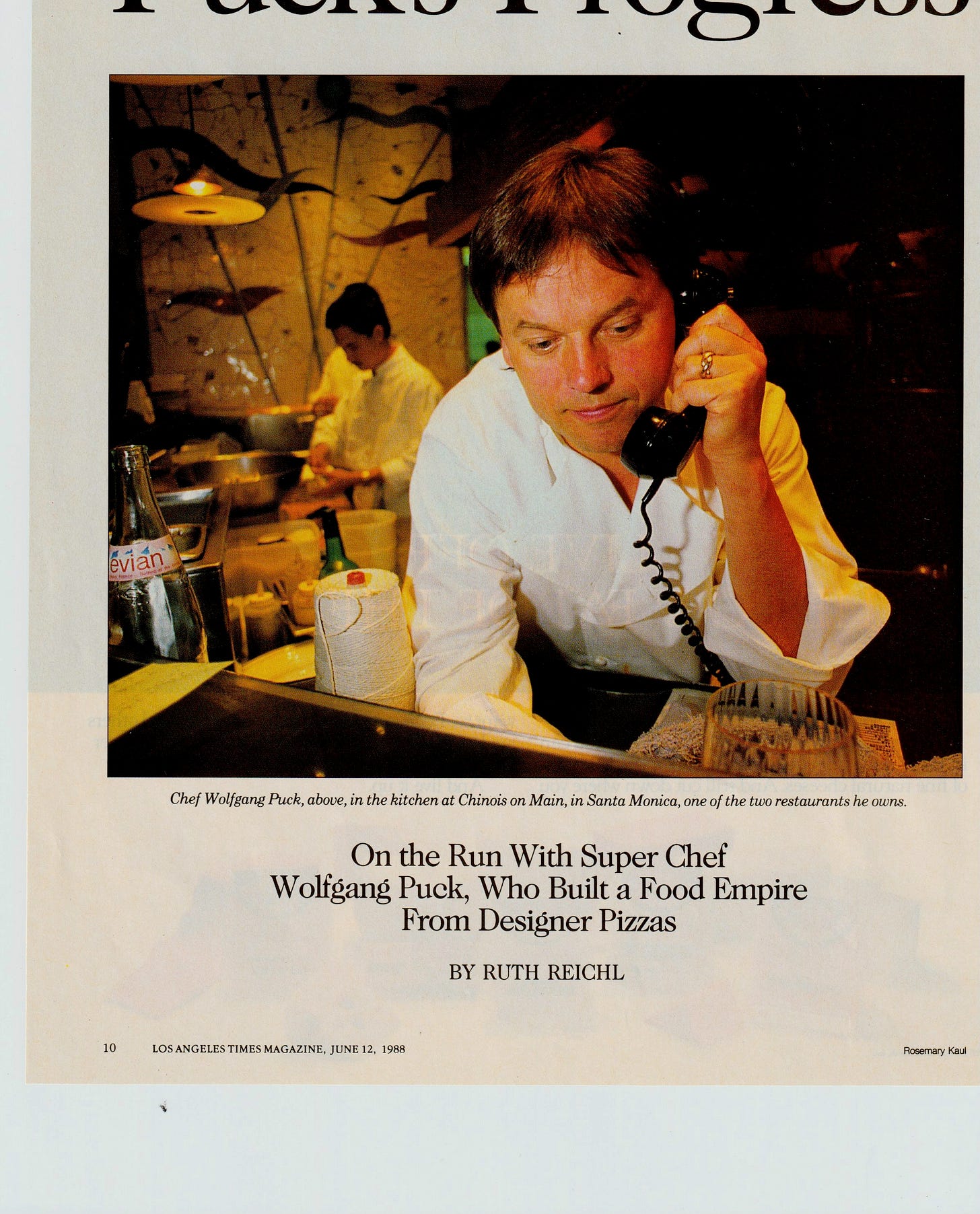Welcome all the new readers since last issue! I’d love to hear how you found us. Is there a community of people just a little bit curious about the school bus? Hit reply and let me know!
Feeling a rumble in the ol’ tum tum? Where do you start? My order of operations is:
The counter - where the baked goods live.
The fridge - home of leftovers. Eating those before they go bad is like a public service, one that I take very seriously.
If I strike out in both spots, then it is the dreaded freezer. Frozen Pizza, long the food of last resort. Will I lose many of you if I say frozen pizza is what I would eat if I was too lazy to make macaroni and cheese?
Pizza is old! In Pizza: A Global History, Carol Helstosky cites Alexandre Duma’s observation that a resident of Naples in 1835 seemed to subsist on two foods: watermelon and pizza. Next summer I will try that diet and report back.
The fact that pizza is so old allows us to use it as a guide to a culture’s priorities and economies over time. Which harvests were plentiful when? What kind of heat sources were available? Through that lens, what can frozen pizza tell us about North American society? Anecdotally, you can see this play out. Where coal is plentiful you have coal fired pizza. Where dairy is plentiful you have cheese-laden deep dish. Cold climate pizzas tend to not have tomato sauce or leafy toppings, with warm climate pizzas the opposite. Shawarma on pizza? A product of international migration. Frozen pizza tells the story of advances in refrigeration and food science, combined with the rise of superstar chefs and global brands.
Design
Frozen pizza was not the first mass-marketed make-at-home pizza. What is now a $17bn industry began with Leo Giuffere’s ready-to-cook pizzas. In New York City you could pick one up for 49 cents at Kaboolian’s Market and bake it at 375F for 20 minutes. Within ten days of opening, Giuffere’s Roma Pizza Company was producing more than 3,000 pizzas a day. While the New York Times claims they were delicious (with the recommended accompaniment of a cold beer), the same column includes a recipe for onion cookies. Buyer/eater beware.
Freezing pizzas raises a whole set of complexities that chefs did not have to contend with when merely refrigerating them. Yeast dies when frozen, so a frozen pizza will not rise. Ice is crystallized water, and the crystals break the gluten in the dough of already risen pizza and pop the cell walls of the toppings. The resulting product was crumbly from the absence of gluten and watery from the excess liquid released by the toppings.
So often in these innovation stories, the role of women has gotten lost to history (see Ritter Sport). However, when it comes to frozen pizza, Rose Totino plays a central role. Her and her husband Jim opened a Minneapolis pizzeria with a loan secured with a pizza payoff to a local banker. Popularity led them to purchase a factory with the goal of mass producing (and freezing) pizza crusts to speed up production in their restaurants. They could not afford the freezing equipment at first and started buying frozen dough from another manufacturer. Rose was skeptical that something that “tasted like cardboard” would sell, but it did. Totino’s started topping the frozen shells and producing their own complete frozen pizzas. By the early 1960’s, Totino’s was the top selling frozen pizza in the US.
Totitno’s was acquired in 1975 by Pillsbury (which is now part of General Mills) and Rose became their first female VP, where she lead innovation in frozen pizza for years. In 1979, she received a patent for frying crusts in such a way that improved the texture when frozen. She didn’t stop there and the use of gums and new chemicals allowed leavened dough to retain structure during freezing and thawing, creating “rising crust” pizzas, like DiGiorno, which now dominate supermarket freezer aisles.
Innovation
The past 8 years have seen the popularization of the gourmet “par baked” frozen pizza. Par baked means the pizza crust has already gone through part of the baking process, which gives it similar properties to baked bread. This partial baking kills the yeast so the internal structure of the dough is set. The par baked shells are then topped with fresh ingredients and the whole package is refrozen, not that dissimilar to the original Totino’s. The most famous is from Roberta’s in Brooklyn. But gourmet frozen pizzas actually date back to the 1980s. In 1982 Wolfgang Puck opened Spago in LA. Spago was the first high-end restaurant to have wood fired pizza on the menu. You can see a copy of the menu here:

Puck took a radical approach to toppings, with his Smoked Salmon Pizza becoming a signature dish. In 1989, Puck released a line of frozen pizzas. As Ruth Reichl tells it in her Substack:
“Johnny Carson used to come into Spago and order a slew of pizzas to go. One day Wolf asked what he was planning to do with all those pies and Carson replied that he froze them. “I was furious,” Wolf told me. “I thought he was ruining my pizzas. But then I thought again. I tried it myself, and the pizzas were great.” And then, of course, Wolf went into the frozen pizza business.”
There are many types of “premium” frozen pizzas out there. Specialty stores like Froza have more than 50 types available. Goldbelly, a delivery service for regional frozen foods, has more than 14 different categories of frozen pizza. Did you know there is Colorado style pizza? It has a braided crust! If you are a deep dish lover, you can get the famous Chicago Deep Dish from Lou Malnati in a heart shape from Amazon for only $72.99.
Venture capital has even entered the business. One such VC funded company is Porta, the frozen food side of the Terroni Restaurant Group. They have a subscription service where you can get boxes of any of their ten pizza types delivered to your door. With a $17bn market up for grabs, expect to see many more players in the space.
Now that you can get pizza from anywhere in the world delivered to your doorstep, we can no longer use pizza as a cultural Rosetta Stone. If you got invited to someone’s home in rural Wisconsin, and they served you a Picasso pizza with Buffalo-style pepperoni cups, you would not know if the regional climate encouraged pork production with cold winters to facilitate sausage making, or if they have a credit card and access to two day delivery.
PS
Meet Luigi Primo, the pizza making amateur wrestler. A favourite of fan-of-the-newsletter Derek, he is known for “making a best pizza” and slapping opponents in the face with a latex dough wheel.
He once participated in an "Iron Pizza Death Match.” His twitter encompasses his essence quite well but this needs to be seen to be believed. Imagine the damage he could do with a frozen pizza!










I haven't tried it yet, but a 24/7 pizza vending machine just "opened" not far from me.
https://www.fox2detroit.com/news/zabot-the-pizza-vending-machine-opens-in-southfield
Here’s to the watermelon pizza